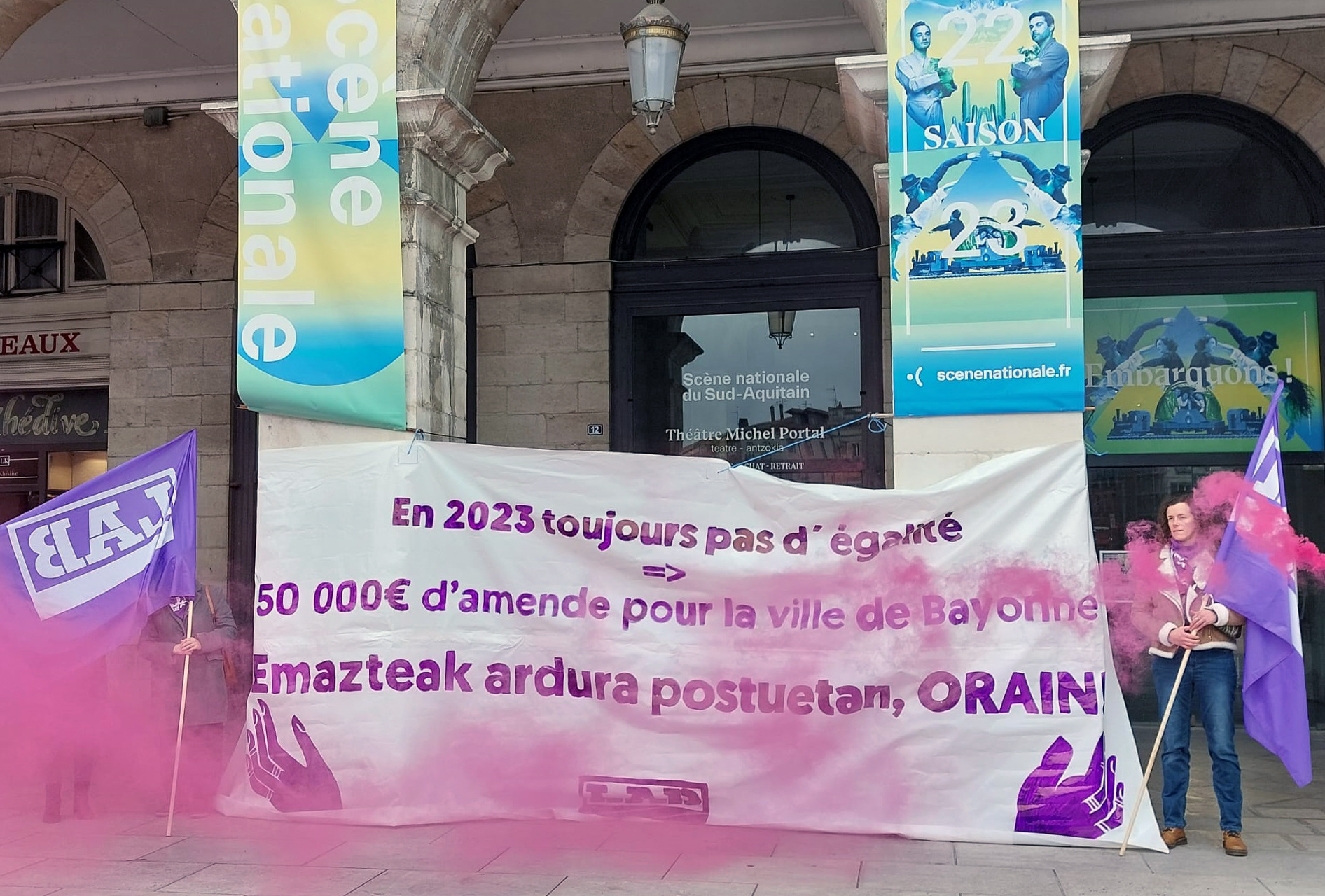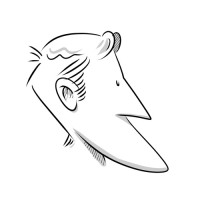Sport, dance and gender
- For years, public institutions have been working on the promotion of sport. Public institutions organise and finance campaigns such as School Sport (EUR 3 million in Gipuzkoa, for example). According to data from the Provincial Council of Gipuzkoa, 80% of elementary school students participate in school sports. The inequality between boys and girls was great 30 years ago (80% men). F.20%. ), but the data are being balanced with campaigns to promote women's sport (60% men). 40% Fem. ).

Dance is not normally considered a sport. Dance does not have the institutional support of sport or the infrastructure network. Still, in Gipuzkoa every week there are 10,000 people involved in Basque dance. Other types of dances should be added to this: ballet, modern, contemporary, ballroom dances, street dances, etc. Mostly women. Sports statistics do not include the knowledge of dance, so those who dance, in addition to dance, do no sport, are considered passive. In other words, dancers consider themselves as citizens to whom it is necessary to activate physically, already activated, without taking into account that they are dancing. In the midst of the wide range of leisure activities, dance competes with few resources and supports, with the public administration having the greatest competitor, as it incites sport without taking into account whether it is dancing.
Every child likes to dance. Bringing to light the sensations that music produces through the body is a capacity that all human beings have. We are born with that faculty. As it increases, most women work and develop this competition and most men abandon and deactivate it. To boys and girls, we indicate the gender identity we have assigned them, and they are trained in stereotyped activities related to each gender, building their identity in opposition to the other gender. Thus, sport in general is identified as an activity of boys and dance as an activity of girls. Therefore, when the time of school sport comes, a special effort must be made to bring women closer to sport, since for several years many girls have been separated from sport, believing that the practice was male. So the girls who have been dancing are mostly encouraged to play sports, where they meet boys who until then have only done sport.
Most men consider dance as a female activity, do not know it and do not value it. They do not know that dance, besides being a cultural heritage, is as beneficial to health as sport. They are foreign to the physical and intellectual emotions and pleasures produced by dance, to the benefits it produces in balance, to the contributions it makes in the organization of intelligence, space and dimensions and in the physical and mental well-being. Most men do not know how the practice of dance contributes to the personal, intellectual, affective and social development of the person.
Girls and boys develop different skills and abilities in the growth process, but suddenly girls are told that exercise, dance, has no value and they have to do sport. They have to do sport, therefore, an activity that they have done little, and together with them are the children who have only done sport. Moreover, sport is primarily understood competitively. Through sport, the complex disability of women with respect to men and men is strengthened and naturalized. But look, most men will never dance, they will not engage in the activity in which women are trained, they will not have to go through a humiliation that shows them they are less.
Could anyone explain to me why they are promoting sport and rejecting dance? Who is better at promoting sport and rejecting dance? Why haven't we put dance in value, a public policy that encourages dance and encourages men to dance?
(For the news debate room, I was asked for an opinion about sport, dance and gender. In the same section, BEÑAT Amenabar has made an invitation to reflect on the centrality of football in the organization of the school space. They are removed with limited space, so the views of both are expressed in a concise way, without taking into account all the details of the subject, in order to encourage debate and not with the intention of establishing a closed reply. In the Hall of Debate of the News, at the entrance Margins of Sport, the opinions of both are collected and here I have stuck my text)
This article has been published by Dantzan and we have brought it thanks to the CC-by-sa license.
Bidali zure iritzi artikuluak iritzia@argia.eus helbide elektronikora
ARGIAk ez du zertan bat etorri artikuluen edukiarekin. Idatzien gehienezko luzera 4.500 karakterekoa da (espazioak barne). Idazkera aldetik gutxieneko zuzentasun bat beharrezkoa da: batetik, ARGIAk ezin du hartu zuzenketa sakona egiteko lanik; bestetik, egitekotan edukia nahi gabe aldatzeko arriskua dago. ARGIAk azaleko zuzenketak edo moldaketak egingo dizkie artikuluei, behar izanez gero.
Ez dakit nondik hasi, egia esan. Ordezkoa naizen heinean –irakaskuntzan ikasturte gutxi batzuk daramatzat lanean– eskola ugari ezagutu ditut Nafarroa, Bizkai eta Araban zehar. Lankide izan ditudan irakasleekin euskal eskolak dituen gabezien inguruan hitz egiten... [+]
Alberto Martinez Eusko Jaurlaritzako Osasun sailburuak argi dio: ez ditu mediku euskaldunak aurkitzen, eta euskarazko osasun arreta ezin da bermatu mediku egoiliar (formazioan dauden espezialista) gehienak kanpotarrak direlako. Mediku euskaldunak bilatzea perretxikotan joatea... [+]
“Gogo eta gorputzaren zilbor-hesteak: bi kate. Bi kate, biak ebaki beharrezkoak: bat gorputzaren bizitzeko, bestea gogoaren askatzeko”. Hala dio Mikel Laboaren kantak; hala izan da belaunaldiz belaunaldi, egun arte.
Gogoan dut nire gurasoak askotan joaten zirela... [+]
Otsailean bost urte bete dira Iruña-Veleiako epaiketatik, baina oraindik hainbat pasarte ezezagunak dira.
11 urteko gurutze-bidea. Arabako Foru Aldundiak (AFA) kereila jarri zuenetik epaiketa burutzera 11 urte luze pasa ziren. Luzatzen den justizia ez dela justizia, dio... [+]
MAITE: (biharko eguna antolatzen bere buruaren baitan) Jaiki, gosaldu, bazkaria prestatu, arropa garbitu, etxea garbitu, gizon hori jaiki, seme-alabak jaiki, hiru horien gosaria prestatu, haiek agurtu, erosketak egin, lanera joan, seme-alabak eskolatik jaso, merienda eman,... [+]
Matxismoa normalizatzen ari da, eskuin muturreko alderdien nahiz sare sozialetako pertsonaien eskutik, ideia matxistak zabaltzen eta egonkortzen ari baitira gizarte osoan. Egoera larria da, eta are larriagoa izan daiteke, ideia zein jarrera matxistei eta erreakzionarioei ateak... [+]
“Kasu, ez gitxu lo!”. Gure denbora eta manerekin baina heldu gira.
Azaroaren 25ean Baionako elgarretaratzera joan ez joan eta autoak nola partekatu pentsatzetik (joan-jina bi oren), bat-batean Lartzabalen elgarretaratze bat antolatu genuen, eta 47 emazte bildu!... [+]
Nahiz eta Nazio Batuen Erakundeak (NBE) 1977an nazioarteko egun bat bezala deklaratu zuen eta haren jatorriaren hipotesi ezberdinak diren, Martxoaren 8aren iturria berez emazte langileen mugimenduari lotua da.
Aurrekoan, ustezko ezkertiar bati entzun nion esaten Euskal Herrian dagoeneko populazioaren %20 atzerritarra zela. Eta horrek euskal nortasuna, hizkuntza eta kultura arriskuan jartzen zituela. Azpimarratzen zuen migrazio masifikatua zela arazoa, masifikazioak zailtzen baitu... [+]
Ez dut beti ulertzen nola aritzen ahal diren lur planeta honetako zati okitu, zuri, gizakoi eta kapitalistako aho zabal mediatikoak, beraiena, hots, gurea, zibilizazioa dela espantuka. Berriak irakurtzen baldin baditugu, alta, aise ohartuko gara, jendetasuna baino, barbaria dela... [+]
Administrazioko hainbat gai, LGTBI+ kolektiboko kideen beharrizanak, segurtasun subjektiboa, klima aldaketa, gentrifikazioa, ikus-entzunezkoak erabiltzeko modu berriak, audientzia-datuak jasotzeko moduak, dislexia, ikuspegi pedagogiko aktibo eta irisgarriak, literatur... [+]
Auzitan jar ez daitekeen baieztapen orokor eta eztabaidaezinaren gisan saldu digute hizkuntzak jakitea printzipioz ona dela, baina baditu bere "ñabardurak", edo esanahi ezkutuagokoak. Hemengo ustezko elebitasun kontzeptuaren azpian dagoen baina kamuflatzen den... [+]
Otzandu egin gara, katalanak eta euskaldunok, ekaitzaren ondoren. Saiatu ginen, bai; sendo ekin genion, eta gogor kolpatu gaituzte; ezin izan genien gure helburu zuzen, ezinbesteko, sakratuei eutsi. Eta porrotaren mingostasuna dastatu dugu, eta bigundu egin gara irabazleen... [+]
Iragana ulertzen saiatzen eta etorkizuna bideratzen, oraina joaten zaigu zenbaiti. Nire proiektuetako bat (hasi baina landu ez dudana oraindik) dudan zuhaitz genealogikoa egitea da. Horretan lagunduko didan liburutxo bat ere erosi nuen. Baina, hain da handia lana, liburutxoa... [+]















